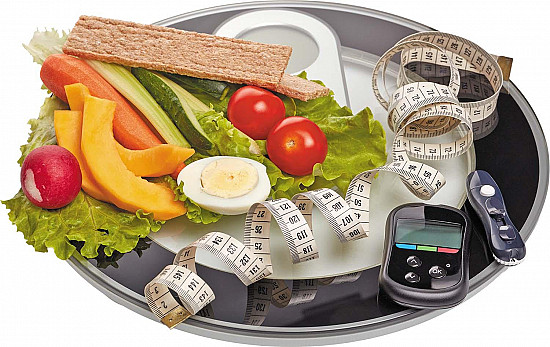Kawasaki disease
- Reviewed by Robert H. Shmerling, MD, Senior Faculty Editor, Harvard Health Publishing; Editorial Advisory Board Member, Harvard Health Publishing
What is Kawasaki disease?
Kawasaki disease is a rare illness that typically strikes children younger than age 5. It is also known as mucocutaneous lymph node syndrome. Kawasaki disease is a mysterious illness of unknown cause, although some scientists suspect that the cause may be an infection (such as a virus or a toxin from a bacterium.
Kawasaki disease was first identified among Japanese children in 1967. Within nine years, the illness had been reported in American children living in Hawaii. Although researchers assume that Kawasaki disease could have been caused by an infection that was carried between Japan and Hawaii, this has never been confirmed. Recent evidence suggests that inherited (genetic) factors may also be important. But the cause of Kawasaki disease remains a mystery.
Kawasaki disease makes children ill by triggering inflammation in many different parts of the body. In the heart, this inflammation can take the form of myocarditis (inflammation of heart muscle), pericarditis (inflammation of membranes covering the heart), or valvulitis (inflammation of the heart valves). Kawasaki disease can cause a type of meningitis (inflammation of membranes covering the brain and spinal cord). It can also cause inflammation in the skin, eyes, lungs, lymph nodes, joints, and mouth.
The most dangerous problem related to Kawasaki disease is the threat of vasculitis (blood vessel inflammation), especially in the body's medium-sized arteries. This vasculitis can be especially dangerous when it damages the heart's coronary arteries, causing an abnormal widening (dilation) or bulge (aneurysm) in these vessels. In rare cases, artery damage related to Kawasaki disease can significantly interfere with the heart's blood supply, even to the point of causing a heart attack in a young child.
In the United States and other industrialized nations, Kawasaki disease is now the most common cause of acquired heart disease in children. Most often, children with heart problems have them at birth.
Kawasaki disease is rather rare, affecting less than one in 5,000 children under the age of 5 in the U.S. Seventy-five percent to 80% of the cases are children under the age of 5 years old. Boys are affected more often than girls.
Symptoms of Kawasaki disease
Because there is no test available to confirm that a person has Kawasaki disease, doctors define the condition by the combination of problems that it produces. The typical person with this disease has a high fever (usually 104° Fahrenheit or above) for at least five days. This fever usually occurs together with at least four of the following additional symptoms:
- conjunctivitis of both eyes (bloodshot eyes)
- symptoms involving the mouth or throat, including redness and inflammation of the lips or throat, cracked lips, bleeding lips, or a strawberry-colored tongue
- symptoms affecting the hands or feet, including swelling, redness of the skin on the palms and soles, or peeling skin on the fingertips, toes, palms, or soles
- a rash, primarily on the torso
- swollen glands in the neck.
People with Kawasaki disease can have other symptoms that are not part of the definition of the disease. These can include:
- pain and swelling of the joints
- diarrhea
- vomiting
- abdominal pain
- cough
- earache
- runny nose
- irritability
- seizures
- weakness in the arms or legs
- weakness of facial muscles
- heart rhythm abnormalities
- shortness of breath.
Diagnosing Kawasaki disease
Because Kawasaki disease is rare in the U.S., doctors will want to check for other illnesses that are more common and cause similar symptoms.
If your doctor suspects that your child has Kawasaki disease, he or she may begin by asking you about:
- your child's medications, to rule out a drug reaction
- recently diagnosed strep throat or recent exposure to someone with strep throat (as streptococcal infection can cause scarlet fever)
- any recent exposure to someone with measles, to rule out measles (especially if your child has not been immunized against this illness)
- any recent tick bite, as Rocky Mountain spotted fever may initially cause similar symptoms.
As part of the diagnostic workup for Kawasaki disease, your doctor may suggest blood tests and diagnostic procedures to check for other infectious or noninfectious causes of your child's symptoms.
Once it becomes clear that Kawasaki disease is a possibility, your doctor may schedule an echocardiogram, a painless test that uses sound waves to outline the heart's structure. This allows the doctor to check for any dilation or aneurysms in the coronary arteries. In some cases, your doctor may recommend coronary angiography, a procedure in which dye is injected into the arteries that supply the heart to look for evidence of aneurysm or narrowing typical of Kawasaki disease.
Your doctor will diagnose Kawasaki disease if your child has symptoms that fit the definition of the illness and if there is no other explanation for these symptoms. Researchers continue to look for a simple, reliable diagnostic test for this illness, but, so far none is available.
Expected duration of Kawasaki disease
Kawasaki disease lasts for several weeks, progressing through three different stages:
- Acute phase: This is when symptoms are most severe. It usually lasts one to two weeks.
- Subacute phase: This stage begins when the child's fever, rash, and swollen lymph nodes go away. However, the child still feels irritable, has a poor appetite and slight eye redness, and may develop peeling skin on the fingers and toes. This stage usually ends three to four weeks after the fever began.
- Convalescent stage: This stage begins when all clinical symptoms are gone, but the results of a blood test called the erythrocyte sedimentation rate (ESR) — an indicator that there is still inflammation in the body — remain abnormal. When the ESR results finally return to normal (usually six to eight weeks after the fever began), the convalescent stage ends.
Preventing Kawasaki disease
Because the cause of Kawasaki disease is unknown, there is no way to prevent it.
Treating Kawasaki disease
Kawasaki disease is treated with a single dose of gamma globulin, given intravenously (into a vein), together with aspirin taken by mouth. Gamma globulin is a purified collection of proteins and antibodies from donated blood. It is not known why it is effective against this disease. The gamma globulin injections may be repeated over several days if fever continues.
The sooner treatment with gamma globulin is started, the better it works. For example, complications of Kawasaki disease, including coronary artery aneurysms, may be prevented with early treatment. But if started 10 or more days after symptoms begin, gamma globulin treatment may not prevent these aneurysms.
Usually parents are warned against giving aspirin to children because it can trigger Reye's disease, a serious disorder that can damage the brain and liver. However, aspirin is the best treatment for Kawasaki disease. So for children with this condition, the proven benefits outweigh the small risk of Reye's disease. The child usually continues to take aspirin for six to eight weeks after the acute symptoms of Kawasaki disease subside.
Other treatments, including corticosteroids or immunosuppressive medications such as infliximab, cyclosporine, or cyclophosphamide, are sometimes recommended if gamma globulin injections are not effective. Occasionally, a procedure called plasmapheresis may be recommended for Kawasaki disease that does not respond to other treatments. In plasmapheresis, blood is removed, filtered to remove proteins (including antibodies), and then returned to the body.
When to call a professional
Call your doctor immediately if your child develops a high fever, with or without other symptoms of Kawasaki disease.
Prognosis
Without proper treatment, about one in five children with Kawasaki disease develops aneurysms in their coronary arteries. With proper treatment, this is much less common. There are other effects on coronary arteries and the heart muscle that can be seen with Kawasaki disease, but they are usually temporary. However, coronary artery disease and other heart problems can develop later in people who had Kawasaki disease, so periodic re-evaluation is recommended for all children who have had Kawasaki disease.
Kawasaki disease can also affect blood vessels in other parts of the body, such as the gastrointestinal tract. It can cause problems with the kidneys, although this is rare, and hearing loss, although it is usually temporary.
The risk of death is low, but it is important to recognize the condition early so that treatment can be started quickly.
Additional info
National Institutes of Health Rare Diseases Center
http://rarediseases.info.nih.gov/
National Institute of Allergy and Infectious Diseases (NIAID)
http://www.niaid.nih.gov/
National Heart, Lung, and Blood Institute (NHLBI)
http://www.nhlbi.nih.gov/
About the Reviewer

Robert H. Shmerling, MD, Senior Faculty Editor, Harvard Health Publishing; Editorial Advisory Board Member, Harvard Health Publishing
Disclaimer:
As a service to our readers, Harvard Health Publishing provides access to our library of archived content. Please note the date of last review or update on all articles.
No content on this site, regardless of date, should ever be used as a substitute for direct medical advice from your doctor or other qualified clinician.















